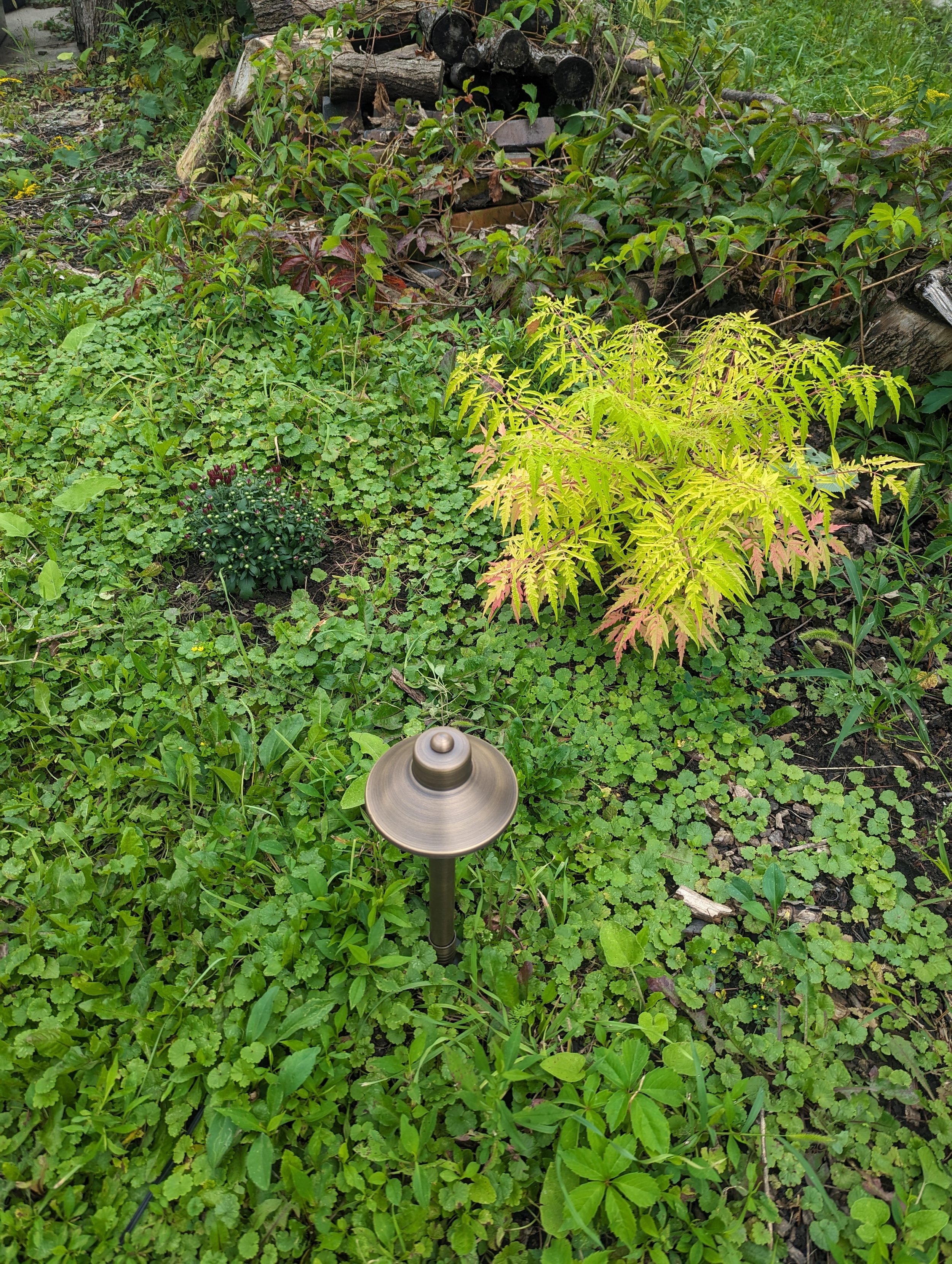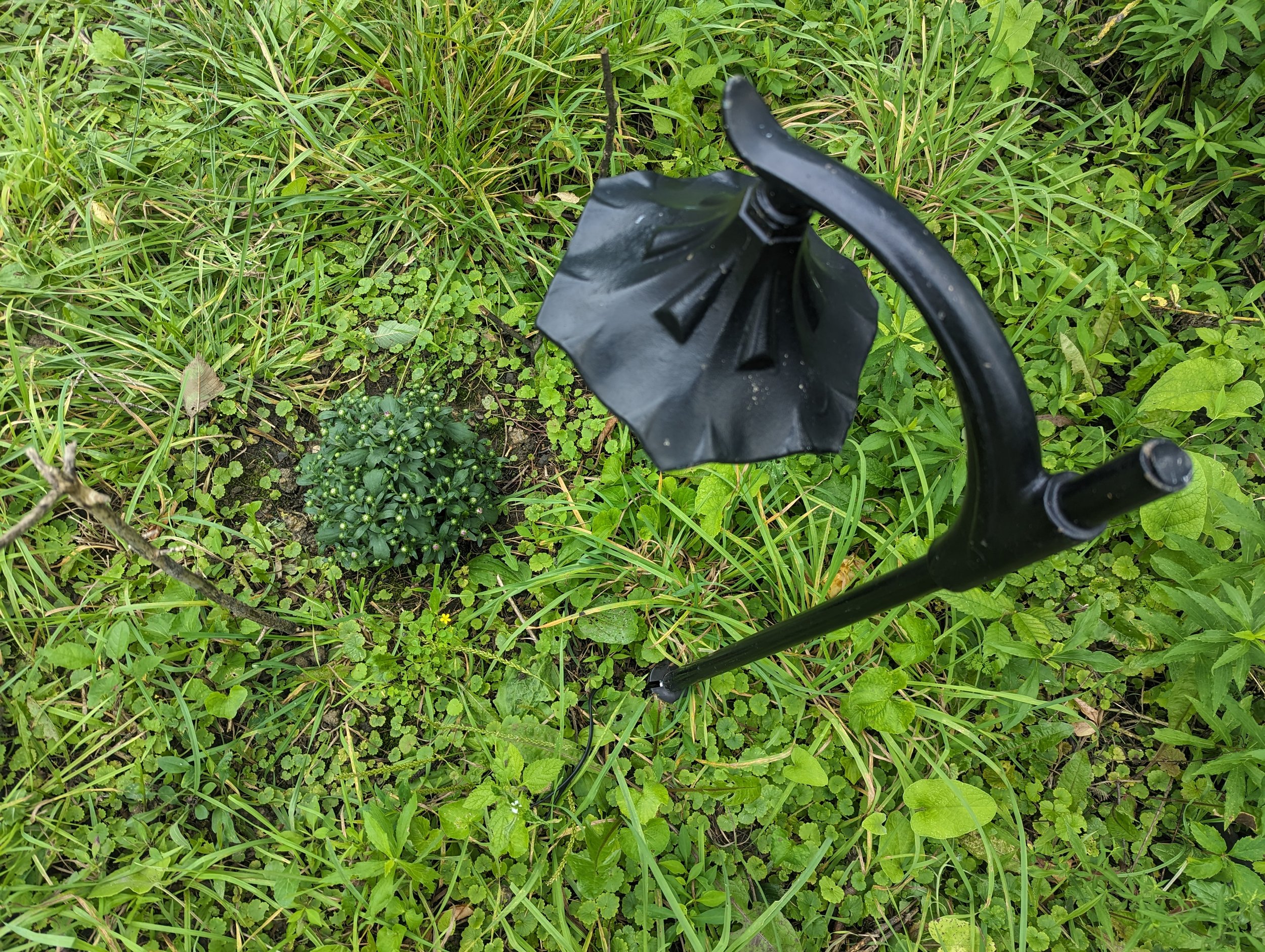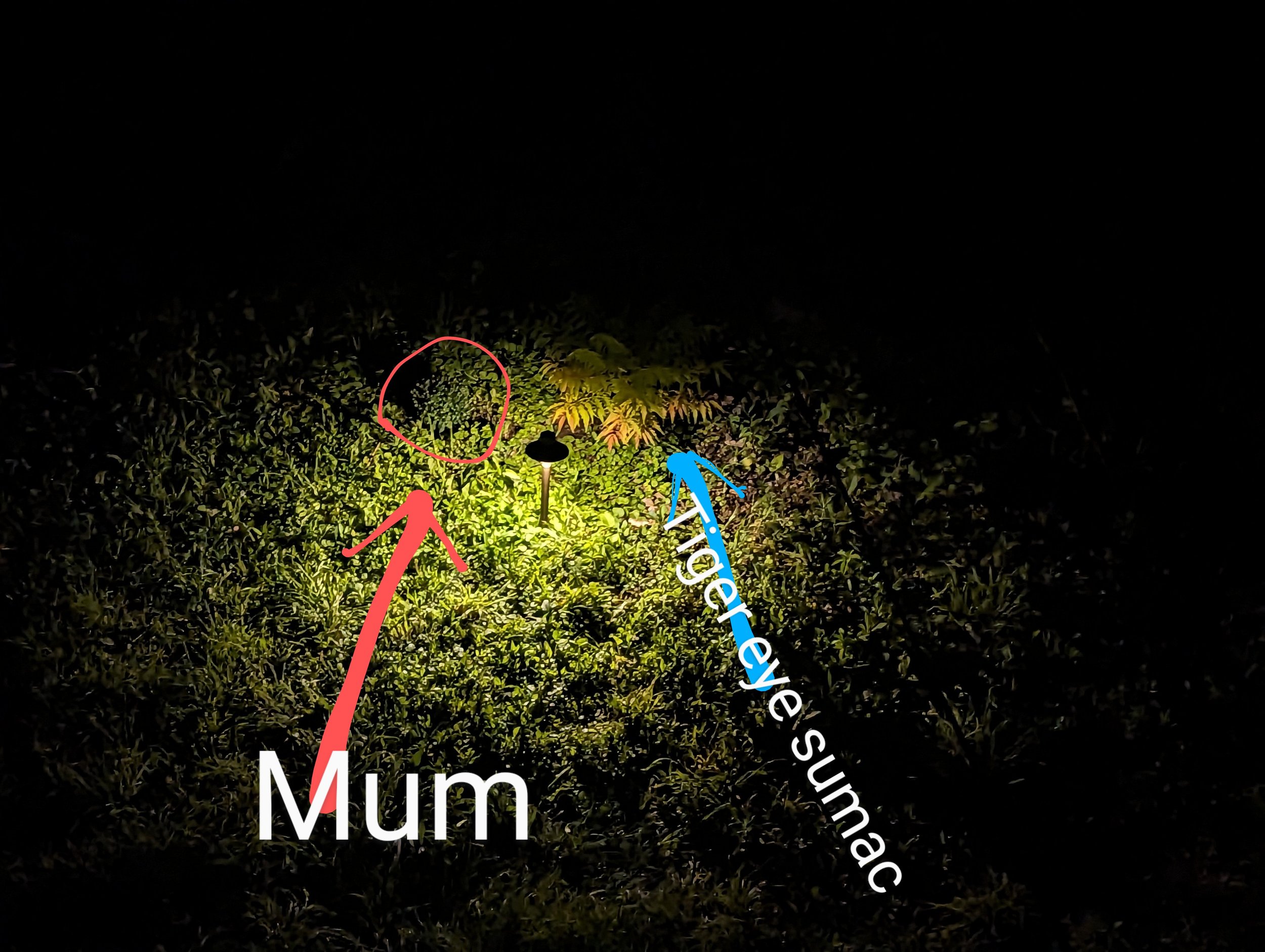Why are my mums only blooming on one side? It may be your landscape lights
Photos of my parent’s mums last autumn when they only bloomed in the less illuminated areas.
This article explores a specific aspect of a broader question: "How do landscape lights impact plants in a negative way?" This train of thought began for me earlier this year when I was working on installing path lights in a garden designed to attract visitors for a bee hotel. I'd already been aware that those 5000K "daylight white" LEDs emit a lot of blue light, which, when seen at night, can mess with human sleep patterns. But at this point I wondered: could my "warm-white" 2700K landscape lights be disrupting these flowering plants' nighttime rest? And what about the bees that rely on their blossoms?
Color temperature of light is measured degrees Kelvin. This photo shows a 2700K “warm-white” bulb on the left, which contains less blue in its spectrum than the 5000K “daylight-white” bulb on right.
I researched the topic online and what I found was a buzz kill, both for me as a businessperson and for the buzzing bees. There was so much to learn about the potential downsides of the landscape lights I've been selling. And to make things more difficult, the research I found wasn’t clear about how my 2700K LED landscape lights fit in. Most of the info was about other types of artificial light at night that have different properties, such as streetlights and outdoor signage. My understanding of this topic will have to come in small steps, so today I’ll focus only on how landscape lights affect the flowering of short-day plants like chrysanthemums.
What are short-day plants?
Short-day plants, also referred to as long-night plants, blossom as the days grow shorter and nights lengthen. The term "short-day" originated from the belief that daylight hours determined blooming time. However, as we now know, it's the duration of uninterrupted darkness that matters. Unlike photosynthesis, which necessitates both red and blue light, flowering is primarily affected by red light - the very kind abundant in 2700K landscape lights.
The great MUM experiment
It's time to explore strategies for preventing potential flowering issues in a garden where landscape lights are already installed near chrysanthemums (mums). Can flowering be prevented by limiting artificial lighting to 6 hours after sunset? Or would 4 hours or be the maximum duration? Or is it 2 hours? Moreover, how does the brightness of the light factor in? To find answers, I set up an experiment.
I planted two mums towards the end of August – one adjacent to a path light and another in an area that remains dark throughout the night (the black path light has no lamp but I installed it as a joke since its housing resembles a flower). Coincidentally, my parents also have mums next to path lights at their residence. They even have photos from last autumn that seemingly showcase the phenomenon of non-flowering due to landscape lights (one of these photos is at the top of this article). This year, both of us will keep our path lights shining all night until half the plant blooms, or a mum in a non-illuminated area blooms. Then we'll gradually reduce the duration of light exposure until the plants bloom fully. If blooming still doesn't happen, we'll decrease the brightness of the lights incrementally to identify the critical threshold at which the plants begin to flower. Stay tuned for updates!





